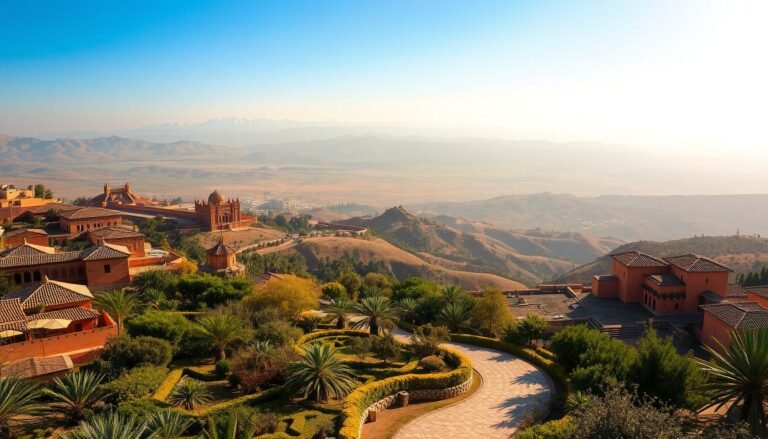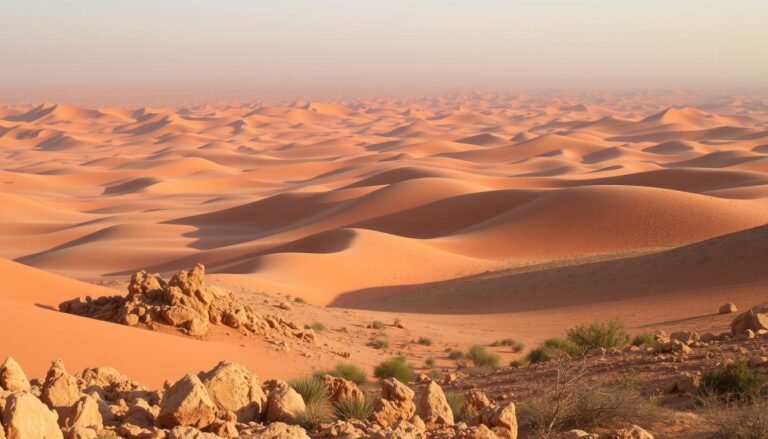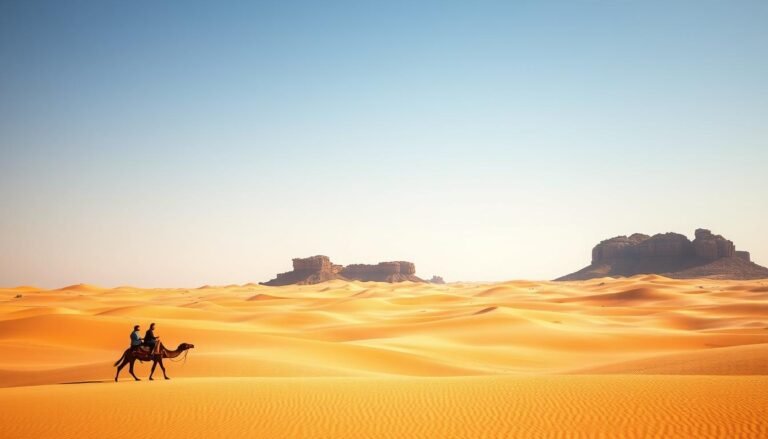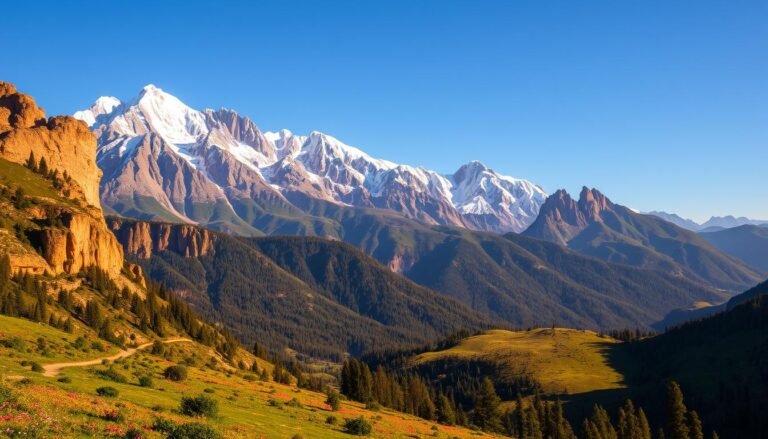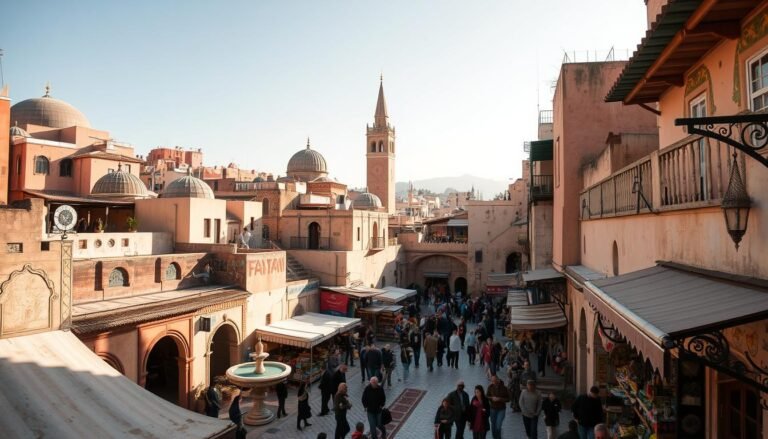Discover the Anti-Atlas Mountains of Morocco
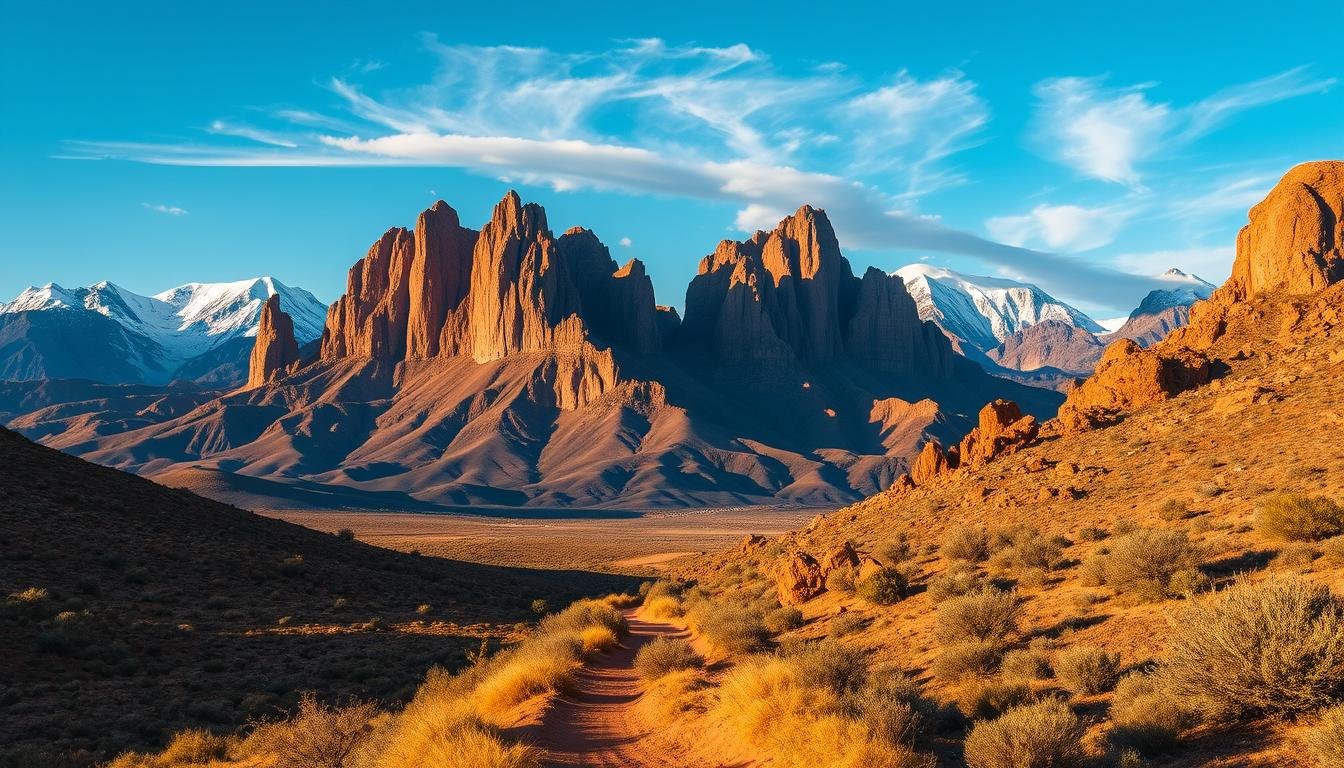
Imagine stepping into a world where rugged landscapes meet rich cultural heritage. The Anti-Atlas Mountains, often called the Lesser Atlas, stretch across 800 km, offering breathtaking views and a glimpse into Morocco’s history. Here, the highest peak, Jbel Sirwa, towers at 3,304 meters, inviting adventurers and curious travelers alike.
Nestled near Tafraoute, this region is a treasure trove of Berber traditions and ancient cave paintings. As we explore the Anti-Atlas, we delve into both its physical beauty and cultural depth. From deep valleys to high peaks, the varied terrain tells a story of geological wonder and human resilience.
Part of the greater Atlas Mountains system, the Anti-Atlas shares ties with ancient formations. Our journey here is not just about discovery but also about immersing in the local Berber communities. Join us as we uncover the natural beauty and cultural richness of this unique region.
Key Takeaways
- The Anti-Atlas Mountains are part of the Atlas Mountains system, stretching 800 km.
- Jbel Sirwa is the highest peak, reaching 3,304 meters.
- The region is home to Berber communities with rich cultural heritage.
- Varied terrains include deep valleys and high mountain peaks.
- The area offers a mix of natural exploration and cultural immersion.
Overview of the Anti-Atlas Experience
As we ventured into the Anti-Atlas region, the untouched landscapes and vibrant culture captivated us immediately. This lesser-traveled part of Morocco, near Agadir, offers a unique blend of rugged beauty and rich heritage.
Embracing the Rugged Trails and Scenic Vistas
Trekking through the Anti-Atlas Mountains revealed breathtaking panoramas, with Jbel Sirwa standing tall at 3,304 meters. The trails, though challenging, offered rewarding views of deep valleys and high peaks, embodying the spirit of the Atlas Mountains.
Planning Our Adventure and What to Expect
Planning a trip here involves considering the best routes and nearby cities like Tafraoute. The area is ideal for outdoor activities year-round, with moderate climates. Engaging with local Chleuh communities provides cultural insights into their traditional way of life.
| Activity | Best Time | Location |
|---|---|---|
| Hiking | Spring-Fall | Jbel Sirwa |
| Cycling | Year-round | Tafraoute |
| Festival | February-March | Ameln Valley |
The Anti-Atlas experience is a blend of adventure and cultural immersion, connecting past and present in a captivating way.
Unraveling the Geology and History of anti atlas mountains morocco
The Anti-Atlas Mountains hold a fascinating geological story that spans millions of years. This region is a testament to the powerful forces that shaped our planet.
Formation Through Continental Collision and Plate Tectonics
The Anti-Atlas Mountains were formed through the collision of tectonic plates, a process linked to the Alleghenian orogeny. This event, which occurred over 300 million years ago, left an indelible mark on the landscape. The region’s distinct rock layers, including limestone, sandstone, and gypsum, provide a visible record of ancient continental collisions.
Ancient Rock Formations and Shaping Over Million Years
Over millions of years, the rocks here have been folded and crumpled, creating the rugged terrain we see today. Features like fissured terrains and remnants of once towering mountains highlight the region’s complex geological history. Studies and images from NASA’s Terra satellite reinforce the magnitude of these ancient processes.
| Geological Feature | Description | Time Frame |
|---|---|---|
| Limestone and Sandstone Layers | Formed from ancient sea deposits | Over 300 million years ago |
| Fissured Terrains | Result of tectonic activity and erosion | Millions of years |
| Gypsum Deposits | Created in ancient arid environments | Approx. 150 million years ago |
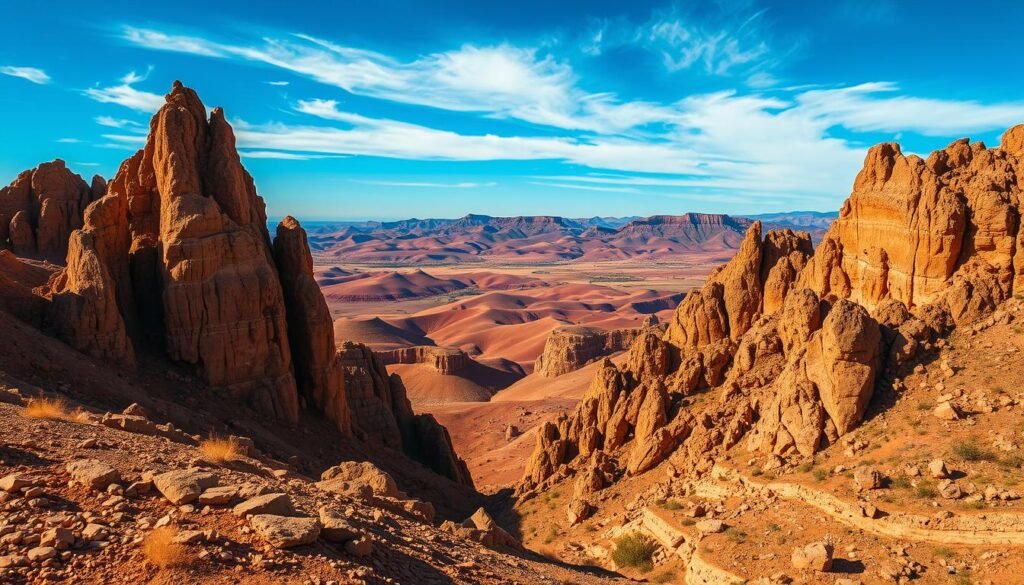
The dramatic collision and subsequent erosion have defined the current landscape, reflecting a history that spans millions of years. This region is not just a natural wonder but also a window into the Earth’s past.
Cultural Insights and Local Landscapes
The Anti-Atlas region is a tapestry of natural beauty and cultural richness. Here, the Chleuh people and traditional Berber villages like Tafraoute welcome visitors with open arms. These communities have preserved their customs and ways of life, offering a glimpse into a timeless world.
Exploring Traditional Berber Villages and Kasbahs
Traditional Berber villages in the Anti-Atlas region are known for their stunning kasbahs and intricate stone architecture. These structures, often perched on hilltops, reflect a blend of practicality and artistry. The use of local rock and earth in construction creates a seamless harmony with the surrounding landscape.
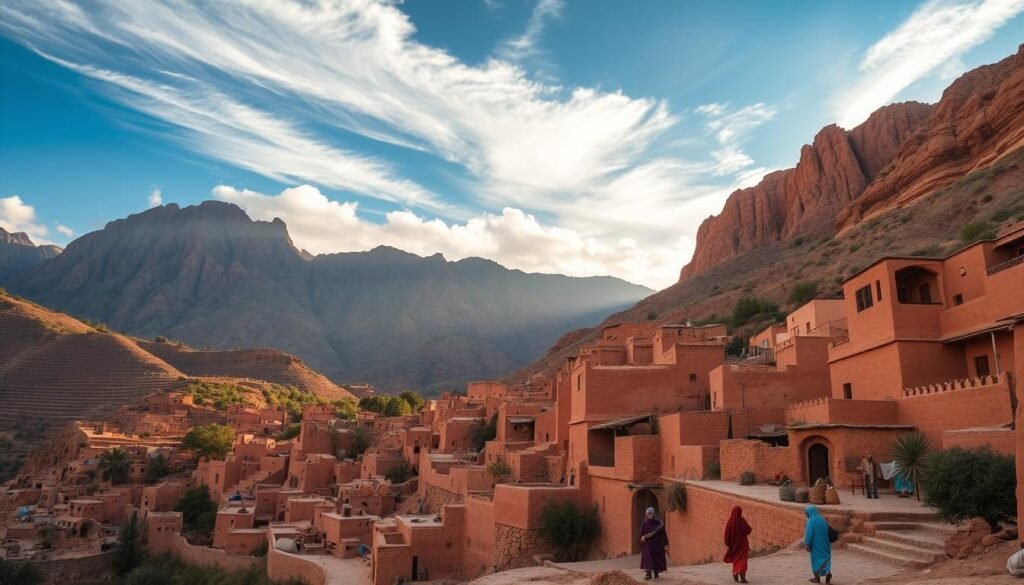
Visitors can explore the narrow streets of these villages, discovering hidden courtyards and bustling local markets. The vibrant culture of the Chleuh people is evident in their music, crafts, and hospitality. This cultural richness adds depth to the region’s natural beauty, making it a unique destination for travelers.
The Region’s Climate, Flora, and Enduring Heritage
The Anti-Atlas region has a diverse climate, ranging from arid conditions in the lowlands to cooler temperatures in the higher elevations. This variety supports a wide range of flora, from cacti to olive groves, which are integral to the local economy and cuisine.
The Chleuh people have developed innovative agricultural practices to thrive in this environment. Their traditional irrigation systems, passed down through generations, allow them to cultivate the land effectively. These practices not only sustain the community but also highlight their deep connection to the land.
As we journey through the Anti-Atlas, we are not just exploring landscapes—we are traveling through time. The region’s enduring heritage, reflected in its architecture, agriculture, and cultural traditions, tells a story of resilience and adaptation. This blend of natural beauty and cultural depth makes the Anti-Atlas a truly unforgettable experience.
Conclusion
Reflecting on our journey through the Anti-Atlas region, we uncover a captivating blend of natural history and cultural heritage. This area, shaped over millions of years, tells a story of geological wonder and human resilience.
The mountain’s formation, beginning over a million years ago, is evident in its ancient rock layers. These formations, shaped by tectonic forces and erosion, provide a glimpse into the Earth’s past. Historical events from both a million years ago and more recent times connect the region’s past to its present.
Our exploration deepens our understanding of both natural forces and the enduring traditions of local communities. The Anti-Atlas stands as a testament to how time and nature have sculpted one of Morocco’s most enchanting landscapes.

